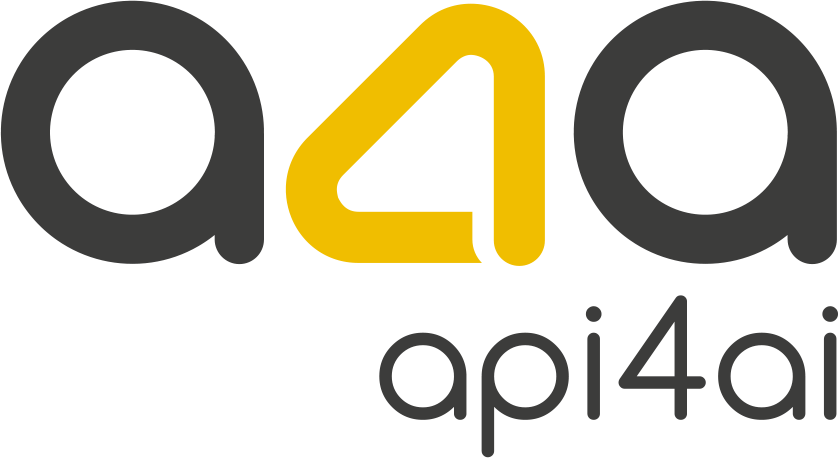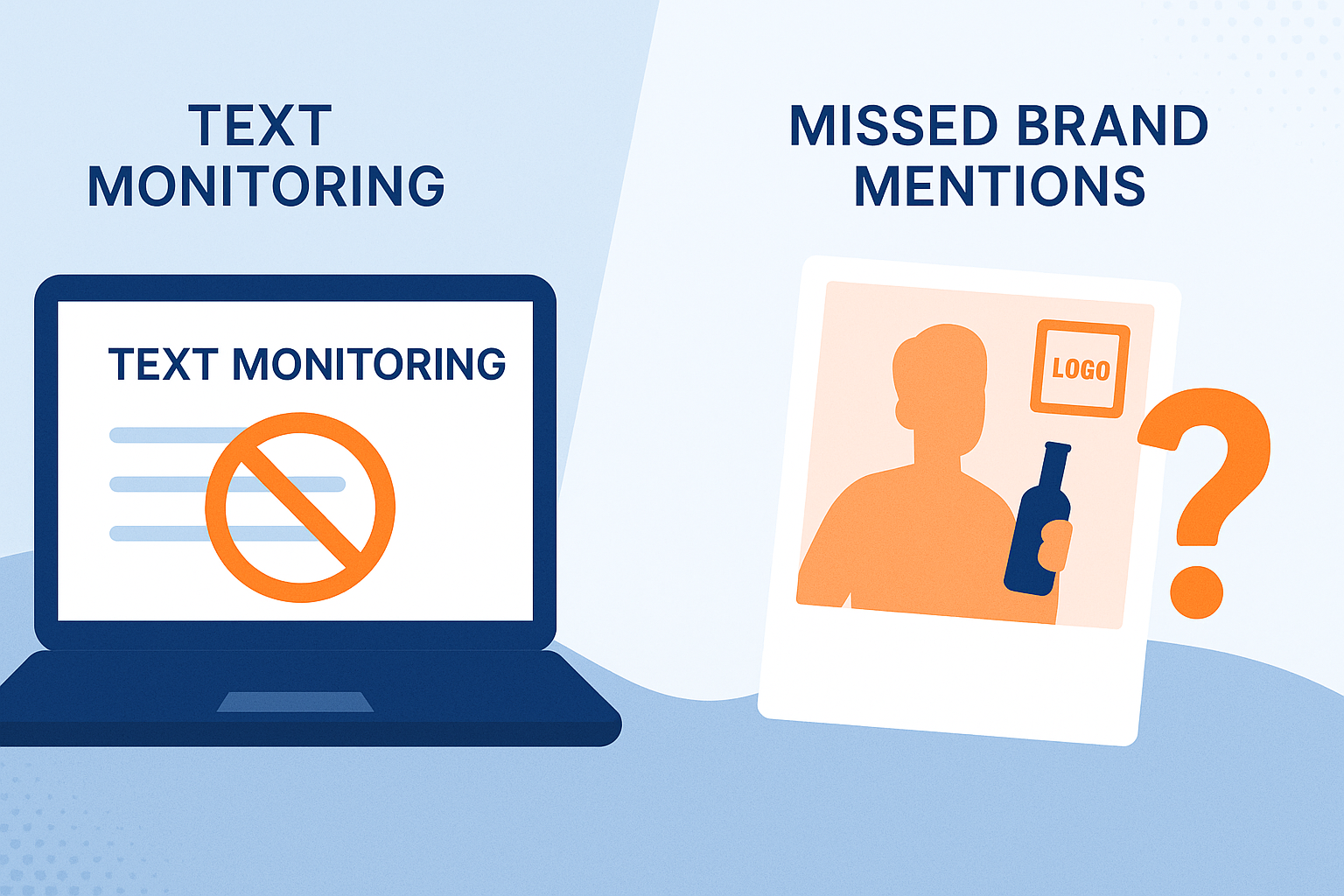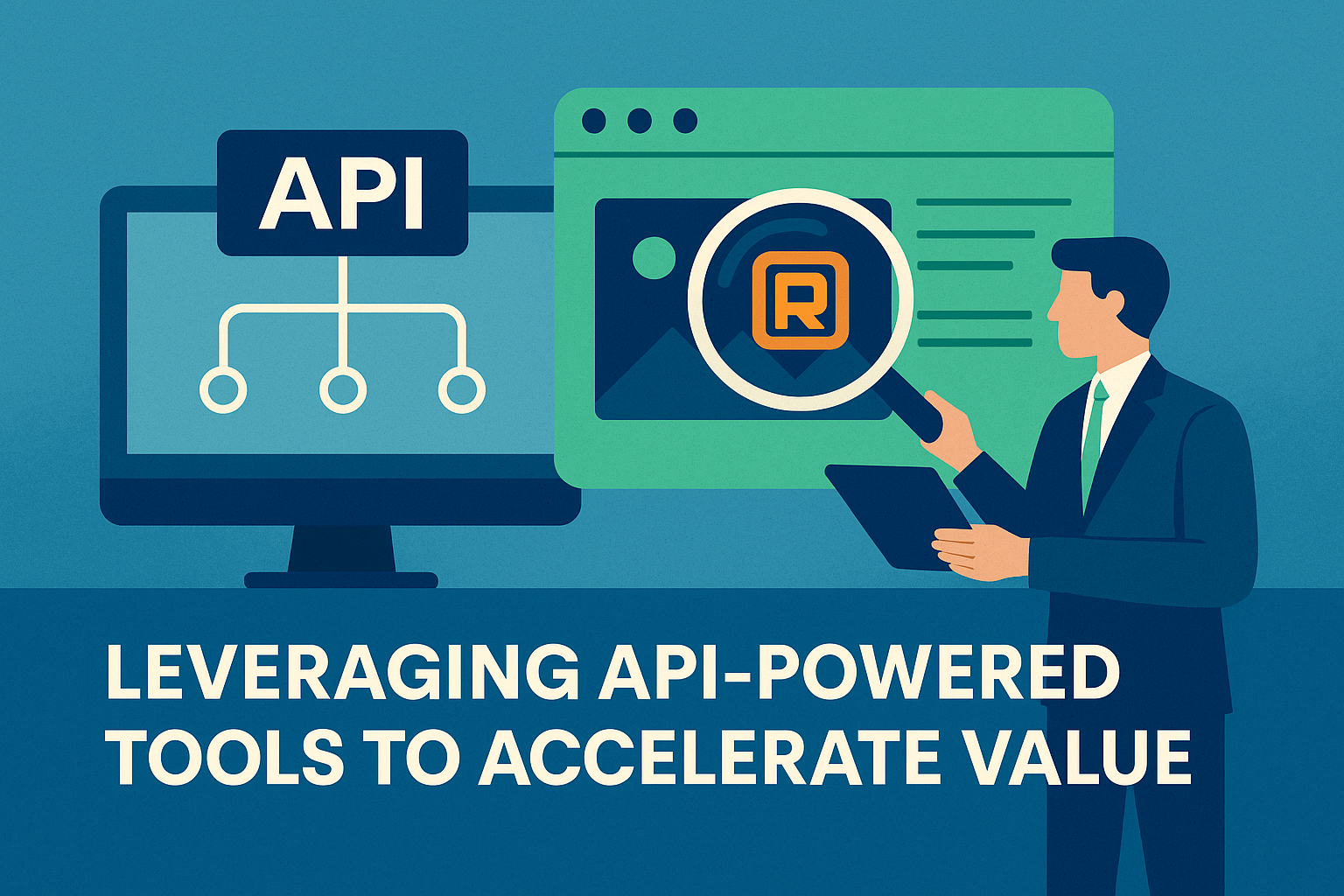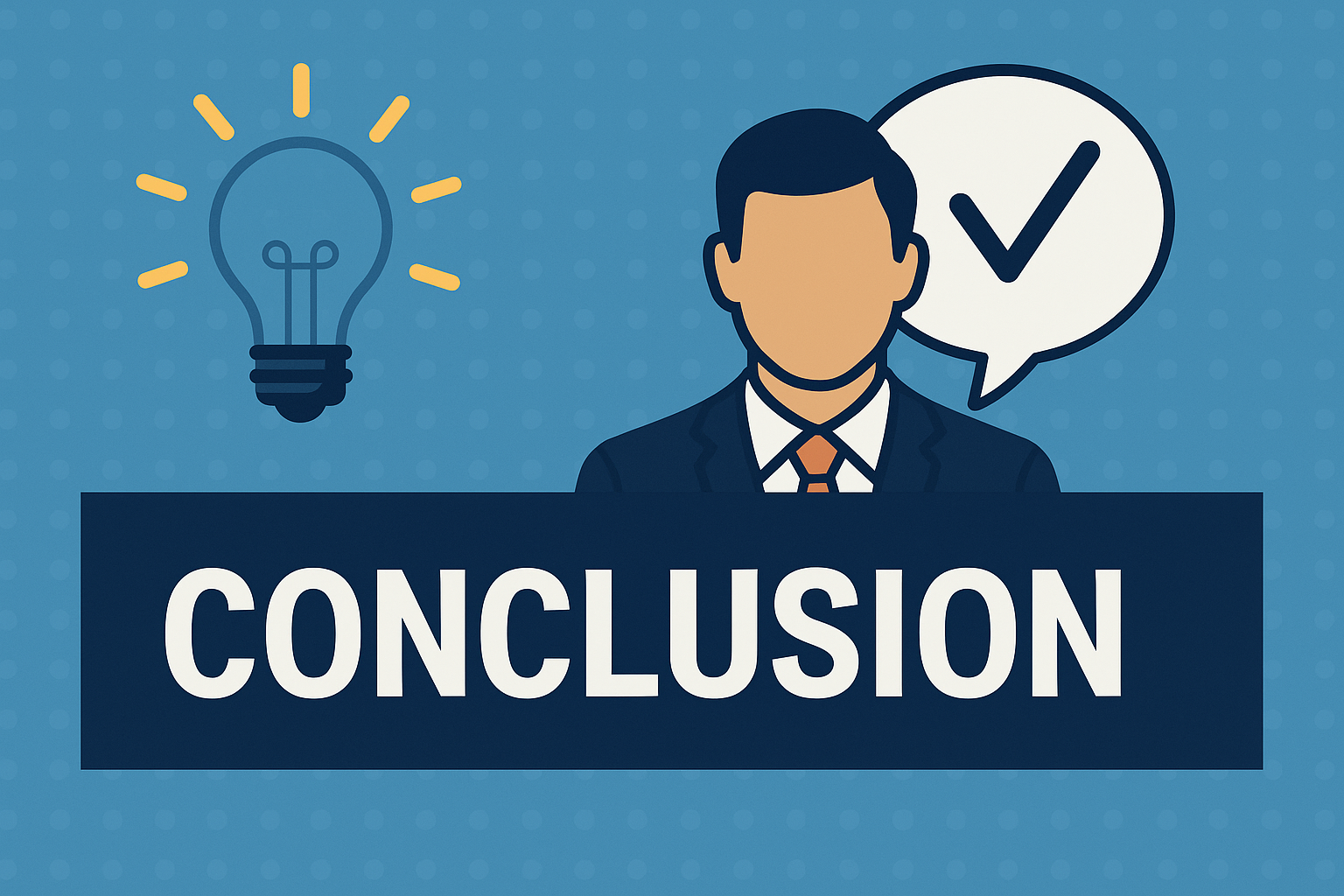AI-Powered Visual Listening: The Next Frontier in Brand Monitoring
Introduction
In today’s media environment, brands live and die by visibility. Every second, logos appear across broadcast feeds, social platforms, event photos, livestreams, and user-generated content. Yet, most enterprises still rely on text-based monitoring tools that track hashtags, captions, and mentions. The problem? A vast portion of brand presence is visual, not verbal — and therefore completely invisible to traditional monitoring systems.
Consider this: when a fan posts an Instagram photo wearing a sports jersey, when a product packaging appears in a viral TikTok, or when a sponsor’s banner shows up behind a celebrity in a news interview, the brand is seen but not tagged. No hashtag. No mention. No metadata. In other words, silent brand exposure — missed by conventional monitoring.
This blind spot matters at the executive level because it directly impacts marketing ROI, sponsorship valuation, competitive intelligence, and brand safety. If leadership teams cannot quantify how and where the brand is truly seen, they cannot allocate budgets effectively or safeguard reputation in real time. As consumer attention migrates to highly visual platforms, the gap between what executives measure and what audiences experience widens.
Enter the concept of AI-powered visual listening. By applying advanced logo detection and computer vision models to images and videos, businesses can now uncover these hidden mentions and measure visual share of voice — a new performance metric that complements traditional social listening. For brands competing on a global stage, this capability is no longer optional; it is quickly becoming a strategic necessity.
The rest of this article explores why visual listening represents the next frontier in brand monitoring, what benefits it delivers, and how organizations can practically implement it through ready-to-use APIs and custom computer vision solutions.
The Limitations of Text-Only Brand Monitoring
For nearly two decades, brand monitoring has been synonymous with text. Tools scan social platforms, blogs, forums, and news feeds for mentions of company names, hashtags, or campaign slogans. While this approach remains valuable, it is increasingly misaligned with how audiences actually consume and share content in 2025.
The fundamental limitation is simple: people don’t always write what they show. A consumer posting a photo of a new car doesn’t need to add the model name in the caption. An influencer featuring a branded beverage may never tag the company. At a sports event, a logo displayed on a jersey or digital banner might dominate the visual field but go completely unmentioned in accompanying text.
This disconnect creates what executives should view as a “visual blind spot” — a growing share of brand presence that remains invisible to text-only analytics. In practice, this means:
Missed exposure opportunities: Sponsorship investments in events, stadiums, or product placements cannot be fully measured because much of the visibility occurs in images and video clips, not captions.
Inaccurate competitive benchmarks: Leadership teams may believe their brand enjoys a higher share of voice than rivals, while in reality competitor logos are being seen just as often — or more — without textual mentions.
Delayed crisis detection: A brand logo appearing in negative or inappropriate visual contexts (e.g., next to harmful content) may spread rapidly without a single text mention to trigger alerts.
Underestimated organic reach: User-generated content is increasingly visual. Memes, short-form video, and livestream snapshots drive cultural moments — but often without hashtags or product mentions attached.
For executives, the strategic consequence is clear: relying solely on text-based monitoring creates blind decisions. Marketing ROI is undercounted, sponsorship negotiations lack solid evidence, and risk management operates with incomplete data.
In an era dominated by visual platforms like TikTok, Instagram, Twitch, and YouTube, executives must recognize that brand monitoring anchored only in text has reached its ceiling. The next frontier lies in expanding visibility from words to pixels — where the majority of brand impressions actually occur.
Visual Listening & Logo Detection: What and Why?
If text-based monitoring represents the first era of brand intelligence, visual listening is the next. It is the practice of scanning images, videos, and live streams to identify when and where a brand appears — without relying on captions, tags, or written context. Instead of listening to words, businesses are now listening to pixels.
At the core of this capability is AI-powered logo detection. Advanced computer vision models are trained to recognize thousands of logos, even in challenging conditions — blurry camera angles, partial visibility, crowd settings, or unconventional placements. Much like the human eye instantly spots a familiar symbol, these systems can detect and classify brand marks in milliseconds.
For executives, the “why” behind this technology is straightforward:
Uncover hidden visibility: Most brand appearances online are silent — images shared without text mentions. Visual listening surfaces these invisible exposures, offering a more accurate measure of true brand presence.
Measure “Visual Share of Voice”: Beyond counting mentions, brands can now quantify how often their logo appears in visual content compared to competitors, creating a richer performance metric for marketing teams.
Validate sponsorship ROI: Whether it’s a logo on a race car, a banner in a stadium, or a product in an influencer’s video, logo detection proves real-world exposure and strengthens evidence for sponsorship negotiations.
Strengthen brand safety: By detecting when a logo appears next to inappropriate, harmful, or NSFW content, businesses gain the ability to act quickly and mitigate reputational damage.
Enhance competitive intelligence: Visual listening does not stop at your own brand — it can be extended to monitor rival logos, revealing their true visibility footprint across platforms.
Unlike traditional monitoring, which only reports what people say, visual listening reveals what audiences actually see. This shift has strategic implications: marketing budgets can be allocated with more confidence, sponsorships can be priced with precision, and crisis response can move at the speed of visual content itself.
Put simply, logo detection turns every photo and video into a source of brand intelligence. For leaders navigating highly visual, attention-driven markets, this is no longer an experimental tool — it is an essential capability for competitive advantage.
Key Strategic Benefits for Brands
The promise of AI-powered visual listening goes far beyond adding another dashboard metric. For senior leaders, it represents a shift from incomplete insights to data that directly influences revenue, risk, and reputation. Below are the most critical benefits that resonate at the C-suite level:
Measuring Visual Share of Voice
Traditional “share of voice” metrics count mentions, tags, or hashtags. But in a world dominated by images and short videos, those metrics understate reality. Visual share of voice measures how often a brand is seen compared to competitors — across broadcasts, influencer content, live streams, and user-generated posts. For executives, this means decisions are no longer based on what consumers type but on what they actually consume.
Sponsorship and Campaign ROI Tracking
When brands invest millions in sponsorships — whether on sports jerseys, stadium signage, or influencer partnerships — the pressure to demonstrate ROI is intense. Logo detection validates exposure by proving when and where the brand appeared, how prominently, and how often. This evidence not only informs future sponsorship negotiations but also helps reallocate marketing budgets toward the channels that deliver the most visibility.
Brand Safety and Reputation Protection
A single misplaced logo can undermine years of reputation-building. Whether appearing next to harmful content, political controversies, or NSFW imagery, the risk is amplified by the viral nature of visual platforms. Visual monitoring acts as an early-warning system, enabling leaders to detect brand misuse or negative associations in real time, reducing response times from days to minutes.
Competitive Intelligence
Every executive wants to know not only how their brand performs, but how competitors are positioning themselves in the same landscape. Visual listening tracks rival logos across the same channels, delivering insight into competitor exposure strategies, influencer partnerships, and media coverage. This intelligence sharpens strategic planning, enabling brands to defend and expand their share of attention.
Unlocking Organic Insights
Visuals carry contextual data that text cannot capture — locations, demographics, settings, and product use cases. When analyzed at scale, this information reveals who is engaging with the brand, where it is appearing, and in what environments. These insights go beyond visibility metrics to fuel product strategy, market entry planning, and audience segmentation.
For executives, the value proposition is clear: visual listening transforms brand monitoring from a reactive reporting function into a proactive, revenue-driving capability. It turns every image and video into a measurable business asset — delivering the kind of actionable intelligence that drives sharper decisions at the boardroom level.
How to Build a Visual Listening Strategy (C-Level Roadmap)
Adopting AI-powered visual listening is not about adding another analytics tool to the stack — it is about embedding a new layer of intelligence into the brand management strategy. For executives, the roadmap should be pragmatic, outcome-driven, and aligned with enterprise goals. Below is a step-by-step approach designed for leadership decision-making.
Step 1: Define Strategic Objectives and KPIs
Visual listening can serve multiple goals — validating sponsorship ROI, monitoring brand safety, benchmarking competitive visibility, or uncovering organic reach. The first step is to clarify which of these objectives matter most at the leadership level. KPIs should reflect strategic priorities: for example, “visual share of voice versus top three competitors” or “time to detect logo misuse in harmful contexts.”
Step 2: Start with a Pilot Program
Before scaling, executives should mandate a controlled pilot. This typically involves processing a representative dataset of images or video streams using a ready-to-deploy Brand Recognition API. A pilot validates accuracy, highlights potential blind spots, and delivers quick wins that secure stakeholder buy-in.
Step 3: Automate Data Ingestion and Processing
Once value is proven, the next step is scale. Establish automated pipelines to capture visual content from key sources: social media platforms, live event feeds, news outlets, and user-generated content repositories. Each frame or image can then be processed through AI models that detect logos, products, or contextual elements.
Step 4: Enrich and Analyze the Data
Raw logo detections are powerful, but their real value emerges when enriched. Adding metadata such as location, audience demographics, content type, and prominence transforms detections into actionable intelligence. At the executive level, this translates into heatmaps of brand exposure, competitive benchmarking reports, and alerts for brand misuse.
Step 5: Integrate into Business Dashboards and Workflows
Insights only matter if they influence decisions. By integrating visual listening outputs into existing executive dashboards, CRM systems, and marketing workflows, organizations ensure that leadership can act on real-time intelligence. This integration enables scenario planning — whether reallocating sponsorship budgets, negotiating partner deals, or launching immediate reputation management responses.
Step 6: Scale with Customization
Over time, leaders should evaluate whether custom-built computer vision models can deliver an edge. Tailored solutions can recognize specific logo variants, packaging updates, or even competitor marks with greater precision. While this requires upfront investment, the long-term payoff is reduced operational costs, higher accuracy, and stronger competitive differentiation.
For executives, the roadmap is clear: visual listening begins with a strategic pilot and matures into an enterprise-wide capability that continuously informs brand, marketing, and risk decisions. The companies that invest now will not only gain deeper visibility but also embed a lasting competitive advantage in an increasingly visual-first world.
Leveraging API-Powered Tools to Accelerate Value
For many leadership teams, the question is not whether to adopt visual listening, but how quickly and cost-effectively it can be implemented. The answer lies in API-powered computer vision services that remove the need for costly in-house development while delivering immediate business impact.
Speed to Market
Building proprietary AI models from scratch requires massive investments in data, talent, and infrastructure — often running into years before delivering results. In contrast, ready-to-deploy APIs allow enterprises to activate logo detection, image analysis, and visual monitoring within days. This accelerated time-to-value is especially critical when executives are under pressure to demonstrate quick ROI from sponsorships, partnerships, or brand safety initiatives.
Flexibility and Scalability
API-powered tools are designed to scale with business demand. Whether a company is analyzing a thousand images from a single event or millions of user-generated posts across platforms, APIs can process the workload without requiring major infrastructure commitments. This elasticity ensures that visual listening remains aligned with budgetary constraints and operational agility.
Breadth of Capabilities
Logo detection is often the entry point, but complementary APIs extend the value proposition:
OCR (Optical Character Recognition) extracts text from packaging, signage, or ads, adding another layer of intelligence.
Object Detection and Image Labelling identify products, environments, or items that appear alongside a brand — enriching context for market insights.
NSFW and Image Anonymization APIs protect brand integrity by filtering inappropriate content or removing personally identifiable information.
Together, these capabilities create a comprehensive brand monitoring ecosystem, enabling leaders to track not only where the brand appears, but also how it is framed, used, and perceived.
Customization for Long-Term Advantage
While off-the-shelf APIs provide speed and efficiency, forward-looking organizations should also consider custom computer vision models for long-term differentiation. Customization ensures higher accuracy for unique logos, packaging variants, or industry-specific scenarios. Though this requires an upfront investment, it reduces reliance on generic solutions and unlocks a sustainable competitive advantage by tailoring insights directly to the enterprise’s strategic needs.
For the C-suite, the message is clear: API-powered tools minimize risk, accelerate adoption, and deliver immediate insights, while custom AI development secures long-term performance and cost efficiency. By combining both approaches, organizations can move quickly without compromising on strategic depth — capturing every unseen impression and transforming it into actionable brand intelligence.
Conclusion
The brand landscape has shifted. Consumers no longer engage primarily through written mentions or hashtags — they engage through images, videos, and live content. In this visual-first environment, relying exclusively on text-based monitoring leaves executives operating with only half the picture. The unseen half — the logos captured in photos, broadcasts, event footage, and user-generated posts — represents a massive blind spot that can distort ROI calculations, weaken sponsorship negotiations, and expose brands to unmanaged risks.
AI-powered visual listening closes this gap. By detecting logos and analyzing visual content at scale, enterprises can measure their true visual share of voice, validate the effectiveness of sponsorships and campaigns, monitor brand safety in real time, and benchmark competitive presence with precision. This is not a marginal upgrade to existing monitoring — it is a strategic leap toward data that reflects how audiences actually experience brands.
For leadership teams, the implications are direct:
Marketing and Sponsorship ROI: Allocate budgets with confidence, supported by hard evidence of visual exposure.
Brand Safety and Risk Mitigation: Identify harmful associations before they escalate into crises.
Competitive Intelligence: Understand not just what competitors are saying, but where they are being seen.
Future-Proofing the Enterprise: Adapt monitoring capabilities to match the dominance of visual platforms like TikTok, Instagram, Twitch, and YouTube.
The path forward does not demand a multi-year transformation. With ready-to-use APIs for brand recognition and visual analysis, organizations can act immediately — piloting solutions, scaling quickly, and delivering measurable results to stakeholders. Over time, custom AI development can enhance accuracy and efficiency, creating a sustainable competitive advantage.
The takeaway for executives is simple yet urgent: in a world where attention is visual, monitoring must evolve beyond text. Those who invest early in visual listening will not only protect their brands but also unlock new levers of growth, insight, and influence. Every pixel carries intelligence — leaders who act now will be the ones turning that intelligence into strategic advantage.






